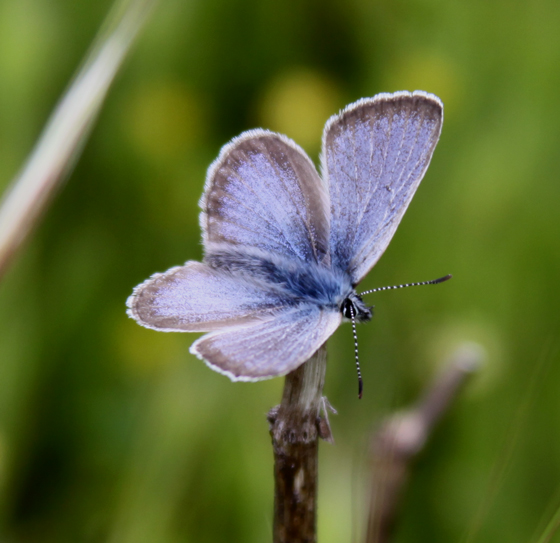 Once Thought Extinct, an Oregon Butterfly Reaches Recovery Milestone
Once Thought Extinct, an Oregon Butterfly Reaches Recovery Milestone
Service Proposes Downlisting Fender’s Blue Butterfly from Endangered to Threatened
Today, the U.S. Fish and Wildlife Service announced a proposal to reclassify Fender’s blue butterfly from endangered to threatened under the Endangered Species Act (ESA). The Service is also proposing a special rule under section 4(d) of the ESA to provide for the conservation of the species. This announcement opens a 60-day public comment period.
This colorful butterfly, unique to the Willamette Valley upland prairie and oak savannah in Oregon, was thought to be extinct in 1937. Remarkably, after almost five decades, this butterfly was rediscovered in 1989. With the help of many collaborators, the butterfly’s populations have grown and become secure enough that it no longer meets the definition of an endangered species. This incredible conservation success story was made possible through teamwork, the support of public and private partners, and habitat restoration using the best available science.
“As with all of our recovery stories, this would not have been possible without many valued partners including private landowners who have made significant contributions to the conservation of Fender’s blue butterfly,” says Robyn Thorson, Pacific Northwest Regional Director. “We can’t thank them enough for voluntarily working with us to preserve this butterfly and other native species of the Willamette Valley prairies.”
Partners in this effort include the Institute for Applied Ecology, Bureau of Land Management, Natural Resources Conservation Service, Benton and Yamhill Counties, Greenbelt Land Trust, The Nature Conservancy, Washington State University, Van Duzer Vineyards and many private landowners.
“When we study the problem carefully and invest the effort to make changes, we can reverse the extinction process and set species like the Fender’s blue butterfly on a new trajectory toward recovery,” explains Tom Kaye, Executive Director of Institute for Applied Ecology. “One major breakthrough was learning that mowing and prescribed fire could be used to benefit the butterfly.”
This butterfly relies primarily upon Kincaid’s lupine, a native plant listed as a threatened species, as the host plant for its caterpillar. Females lay single eggs on the underside of the lupine leaves, up to approximately 350 eggs in total. Two other similar lupine species also provide food for the caterpillars, which they feed on until the plants dry out and the larvae go into diapause for the fall and winter. Butterflies generally fly between mid-April and the end of June and only live 7 to 14 days. Fender’s blue butterfly is found in the Willamette Valley in Benton, Lane, Linn, Polk, Yamhill, and Washington counties in Oregon.
The 4(d) rule covers activities that facilitate conservation and management of the butterfly’s habitat by creating, restoring, or enhancing native upland prairie or oak savannah. Specific activities include planting of native vegetation, mowing and removal of invasive, nonnative plant species.
The Service is seeking public comments concerning the proposal to downlist Fender’s blue butterfly, and any additional information on the species. Comments will be accepted through August 23, 2021. For instructions on how to comment go to:https://www.fws.gov/oregonfwo/.
The U.S. Fish and Wildlife Service works with others to conserve, protect, and enhance fish, wildlife, plants, and their habitats for the continuing benefit of the American people. For more information, visit www.fws.gov/pacific, or connect with us through any of these social media channels at facebook.com/USFWSPacific, flickr.com/photos/usfwspacific/,tumblr.com/blog/usfwspacific or twitter.com/USFWSPacific


